Categories: Featured Articles » Electrician at home
Number of views: 28109
Comments on the article: 0
Common mistakes when installing home wiring
Home wiring is the heart of an apartment or private house. Wiring must be reliable and safe, and also fully meet the needs for the inclusion of household electrical appliances in the network. Very often, a number of errors are made during the installation of electrical wiring, which in the end can lead to various negative consequences.
In this article, we will consider the most common mistakes that are made during the installation of home wiring and the consequences that these errors may entail.
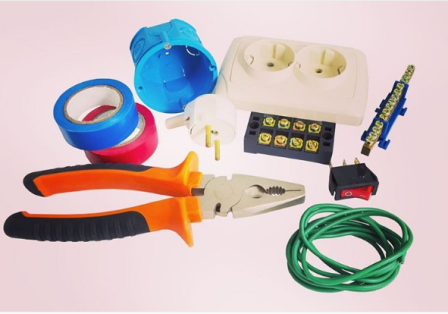
1. Calculation of loads
The very first stage is the preparation of a power supply project. This project involves drawing up a wiring diagram taking into account the loads of electrical appliances, the desired locations of sockets, switches, lighting elements. In this case, the calculation and selection of protective devices in the electrical distribution panel, cables of wiring lines, connectors and other elements are also performed.
This stage is the most responsible, since the reliability and safety of electrical wiring operation depend on the correctness of the calculations performed.
One of the most common mistakes at the design stage future wiring is the calculation of loads for each room of the apartment without taking into account all options for the simultaneous use of electrical appliances.
Such electrical wiring will not ensure the free inclusion of all necessary household electrical appliances in the network at the same time, there will be a need to lay an extension cord from the nearest outlet, powered from another wiring line, or to turn on electrical appliances in a network alternately, which causes a number of inconveniences.
It is also a mistake to assume that the currently calculated load of electrical appliances will be so all the time. The installation of new electrical wiring is carried out with the expectation of long-term operation, so you need to very responsibly approach the stage of calculating its load capacity, both in individual sections and in the electrical wiring as a whole.
2. Accounting for the power limit
A certain amount of power is allocated for each apartment or private house in accordance with the contract for the provision of electricity services. Power limitation is usually carried out by installing a circuit breaker of the appropriate rating or use power limiter with setting the appropriate limit of the consumed active component of power.
In this case, a mistake is often made when calculating the wiring based on the set power limit. It will correctly calculate the posting with a margin, taking into account a possible increase in the limit of power consumption in the future.
Perhaps now the limit of power consumption is small and it fully meets all the needs. If you install the wiring with a margin, then in the future, if you need to use new, more powerful electrical appliances in your home, it will be enough to get permission to increase the load limit and replace the circuit breaker designed for a higher current or increase the setting in case of using a power limiter.
In this case, the wiring will not need to be replaced if it has been installed with a sufficient margin.
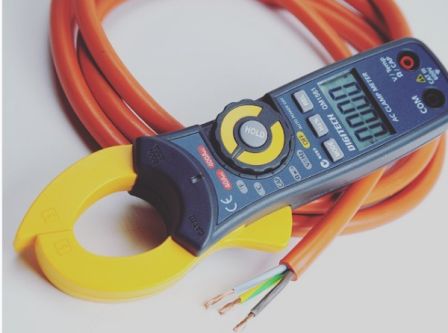
3. Ways to power sockets and lighting
When drawing up the wiring diagram you need to choose the right way to power each of the outlets in the house, all the lighting lines of the wiring. A typical mistake is to connect all outlets from one or more lines.This scheme was used 20-30 years ago, when the loads of electrical appliances were small and in order to save all the outlets in the apartment were powered by junction boxes, which, in turn, were powered from one wiring line.
In modern conditions, when the load of household electrical appliances has increased several times, such a wiring diagram is unacceptable due to its unreliability and lack of protection against overload of individual wiring lines.
This is due to the fact that the circuit breaker that feeds several rooms or the entire apartment is not able to protect individual sections of the wiring from overload, since it is selected taking into account the total load of the outlets and lighting devices powered from it.
Of course, intermediate junction boxes can be used to power multiple outlets. This option is suitable for those groups of outlets, the total load of which is relatively small, for example, 16 A.
Sockets, which will include powerful household appliances, must be powered from individual wiring linesprotected by separate circuit breakers of the corresponding rating. Such electrical appliances include an electric oven, a water heater, a washing machine, an electric heater, a boiler and other electrical appliances characterized by high power consumption.
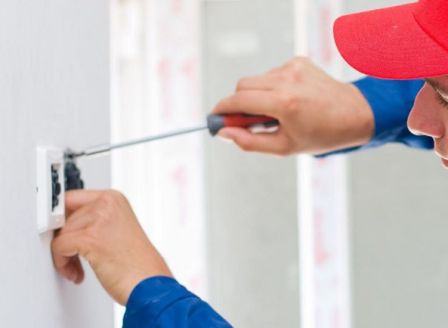
4. Contact connections
When using intermediate junction boxes in the wiring diagram, it should be remembered that branch contact connections in these boxes are the weakest point of the wiring.
If you do not provide a reliable contact connection of conductors in junction boxes, then soon, with the flow of load currents, these contact connections can be damaged. Therefore very important choose reliable connectors (terminal blocks) or provide the connection of conductors in junction boxes by soldering or welding.
As for the installation of intermediate junction boxes, in this case very often they are hidden under a layer of plaster so that they do not stand out. From the point of view of aesthetics, this is acceptable, but if it becomes necessary to conduct an audit of contact connections or eliminate a wiring fault, it will be difficult to find the location of the box. Therefore, it is necessary to mark the locations of the junction boxes so that if necessary it is easy to find them.
5. The choice of cable cross-section, protection devices
When drawing up a wiring project, special attention should be paid the choice of the required cable section, calculation and selection of required protective devices. In this case, the mistake is to choose a cable with an insufficient cross-section, which in the future can lead to damage.
In a single-phase household network, a three-core cable must be laid. A typical mistake is the laying of a two-wire cable due to the absence of a grounding bus in the distribution panel.
Even if at the moment it is not possible to organize the grounding of the electrical wiring, it is still necessary to lay a three-core cable, since the home electrical wiring must be necessarily grounded. And the question of how to ensure grounding can be solved after installing the wiring, it remains only to bring a grounding conductor into the home switchboard and connect it to the already laid protective conductors of the wiring lines.
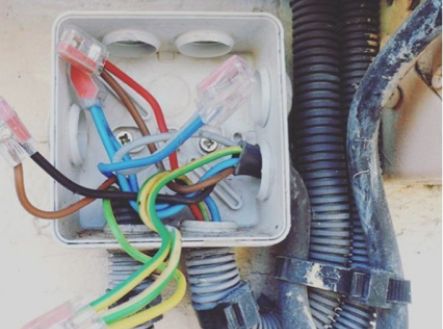
As for protective devices, in this case, their incorrect choice can lead to damage to electrical wiring, fire or shock to people operating household appliances with electric current. Very often, in order to save money, only circuit breakers are installed in the electrical switchboard.
Such savings can be expensive, so that the wiring is safe for people and has reliable protection, In addition to the circuit breakers, it is necessary to install residual current circuit breakers or differential machines, as well as voltage relays.
If the power lines of the power supply networks do not have adequate protection against lightning surges, it is recommended to protect the home wiring by installing it in the distribution panel lightning surge protection devices.
The money spent on this protective device is a trifle compared to what could be the loss in case of a lightning discharge through home wiring and household electrical appliances included in the network.
6. Consideration of the location of future communications and interior elements on the walls
Another common mistake when installing wiring is cable laying or placement of various wiring elements without taking into account the location of various communications or in those places where it is planned to carry them out in the future.
The same applies to the relative positioning of wiring lines and various interior elements on the walls. That is, when drawing up the wiring diagram - a diagram where the exact locations of all the structural elements of the wiring are indicated, it is necessary to take into account the location of the various elements of the interior and communications.

It is recommended to install the wiring correctly, taking into account generally accepted standards for distances relative to building structures and other criteria, so that in the future it is easy to determine where the wire goes and where the wall cannot be drilled, so as not to damage the laid wiring cable.
7. Laying low-voltage networks
In a modern house, in addition to power wiring, a network, telephone cable, and TV cable are laid. Laying of these cable lines together with power cables in one strobe, cable channel or pipe (depending on the chosen method of wiring) is undesirable, as unwanted interference will be created that interferes with the normal operation of telephone, Internet, TV signal, etc.
In addition, the joint laying of these lines in case of violation of the integrity of the insulation can lead to damage to equipment. That is, it will be correct to lay cables for other purposes separately from the power cables of the wiring.
8. The choice of sockets and switches
When choosing sockets, switches, protective devices and other structural elements of electrical wiring, attention should be paid primarily not to their cost, but to their quality. It is necessary to analyze the existing range of electrical goods and choose the most optimal option in the ratio of price and quality.
Very often, when choosing sockets, switches, mounting boxes and other elements of electrical wiring, the conditions in which they will be used are not taken into account.
In this case, we are talking about protecting the case from the negative effects of moisture and foreign objects. For example, it will be a gross mistake to purchase conventional outlets for powering bathroom appliances.
For rooms with a high level of humidity, it is necessary to purchase sockets, mounting boxes, fixtures and other elements that have adequate protection against moisture.
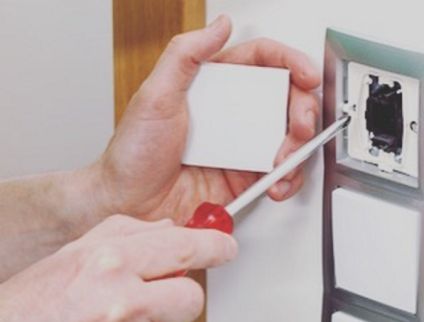
Often there is a situation when the selected outlet quickly fails. A socket can be the most reliable, expensive, but if you include an electric device that has a load greater than the allowable one for a given socket, then it will quickly fail. That is, when choosing sockets, an error is often made - the power of a household appliance that is planned to be included in this outlet is not taken into account.
Mention should also be made of dual sockets, that is, sockets that combine two or more sockets in one housing.Most of these outlets have a standard rated current of 16 A, and this current is total for two pairs of plug connectors. Therefore, to turn on two electrical appliances whose total power is higher than the rated current of a double outlet, it is necessary to install two separate outlets.
9. Cable core material
Almost all of the old electrical wiring, mounted 20-30 years ago, is aluminum. In order for the new wiring to be reliable and durable, it is necessary to choose a cable exclusively with copper conductors, as it is characterized by many advantages compared to an aluminum cable.
The main advantages of copper cable compared to aluminum are longer service life, high fracture resistance, higher oxidation resistance, and the ability to connect cores in junction boxes by soldering or welding.
Also, copper is a stiffer metal, compared with aluminum, respectively, in different connectors, the copper wire will retain contact reliability much longer than aluminum.
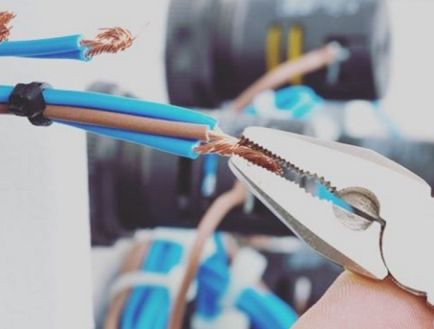
10. Connection of aluminum wire with copper
A very gross mistake should also be mentioned - connections of aluminum and copper conductorsin which both metals are in contact with each other. Such a contact connection is unacceptable, it is very unreliable and if the load current flows through it, it can be damaged in a short time.
If there is a need to connect aluminum and copper wire, then it is necessary to do this in such a way that both conductors do not have direct contact. For example, you can use a connector that provides for the connection of conductors to individual terminals.
Conclusion
Based on the foregoing, we can conclude that in order for the wiring to be reliable, safe, and fully satisfy the consumer's needs for power supply, it is necessary to avoid errors and approach the installation of wiring at all stages with all responsibility.
It should also be remembered that ordering a wiring installation service from an electrician or the appropriate organizations does not guarantee that the wiring will be installed without error.
Therefore, even if you decide to use the services of third-party specialists, it is necessary to arm yourself with some knowledge in order to timely detect and prevent a possible error in the process of wiring installation.
In conclusion, it should be mentioned that electrical work must be carried out in compliance with safety measures, in particular with regard to electric shock. Non-observance of safety measures is a mistake that can cost lives, therefore, when organizing the installation of electrical wiring, you must first take all necessary security measures.
See also at bgv.electricianexp.com
:
